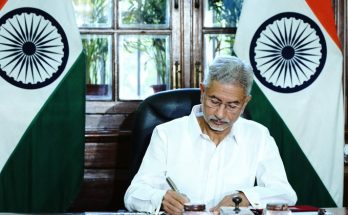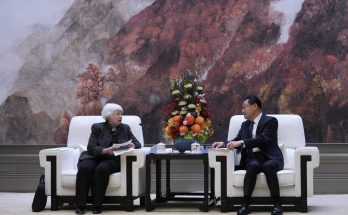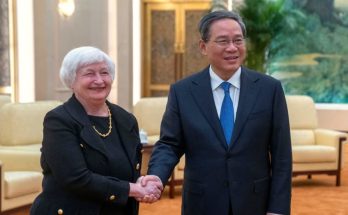
Amid the coronavirus pandemic, a success story unfolded in China – the complete eradication of absolute poverty in the world’s most populous nation, home to over 1.4 billion people. Indeed, it was a milestone moment when Chinese President Xi Jinping announced on February 25 that China has secured a “complete victory” in its fight against poverty. With absolute poverty eliminated, China has created another “miracle” that will “go down in history,” President Xi said. “No country has been able to lift hundreds of millions of people out of poverty in such a short time,” the Chinese leader said.
President Xi Jinping has a lot to rejoice in as he led the battle against poverty from the front. The sheer scale of China’s anti-poverty campaign has no parallel in the world. According to latest figures, over the past eight years, the final 98.99 million impoverished rural residents, who were below the current poverty line, have all been lifted out of poverty. All 832 impoverished counties and 128,000 villages have also been removed from the poverty list. For the collective Chinese leadership of the CPC, it’s a matter of immense as China met the poverty eradication target set out in the United Nations’ 2030 Agenda for Sustainable Development 10 years ahead of schedule.
Combined with poverty-reduction results since the late 1970s, China is responsible for over 70% of the global reduction in poverty over the period, according to a World Bank report.
China’s monumental efforts in eradicating poverty have garnered international praise. UN Secretary-General Antonio Guterres has been quick to acknowledge the success of China’s anti-poverty campaign over the past few years, calling it “the most important contribution” to the global poverty reduction cause.
How China did it

China’s epic struggle against poverty has lessons for the developed world. Poverty alleviation has been integral to China’s economic development and intensified under President Xi Jinping policy agenda since his tenure.
Experts and analysts have provided their interpretations for China’s success. “Over the past 40 years, China’s economic growth has resulted in more than 800 million Chinese escaping extreme poverty… This is an extraordinary achievement,” said Martin Raiser, the World Bank’s country director for China.
The Targeted Poverty Alleviation Program of China followed an approach based on Industrial development, social security, education, eco-compensation and relocation.
From Beijing’s perspective, the “largest poverty alleviation campaign in history” has been an overall success. It has lifted more than 68 million people living in China’s rural areas out of poverty over the past five years, driving the national poverty rate down from 10.2 to 3.1 percent.
In order to achieve the objectives set by the 2016-2020 poverty alleviation plan, the Chinese government scaled up financial support, allocating 91 billion RMB (13 billion USD) of poverty alleviation funds for 2019.
To complement this, President Xi called for stricter oversight of poverty alleviation funds management to prevent graft or misuse of funds. In the past five years, more than 60,000 cases of corruption and misconduct in poverty relief efforts have been reported and according to the “Central Commission for Discipline Inspection”, 388 people received administrative or criminal penalties for embezzling anti-poverty funds.
The government also accelerated the development of “Internet Plus” strategies in the fight against poverty. For instance, Chinese internet giant Alibaba supported the creation of rural e-commerce centers known as Taobao villages that encouraged online sales of farm produce and local specialties. By 2015, 780 Taobao villages in China collectively employed over one million people.

Investing in food security, education, health and housing, especially in rural areas are some of key taken by China as part of its anti-poverty strategy. China registered the poor on a national database, to effectively monitor and implement domestic strategies. The government made food and clothing as a pre-requisite for poor population and mandated nine-years of education for children from low-income families. Basic medical needs and good living conditions for the population were considered.
Through investments in rural infrastructure, agriculture and subsidies, China attempted to empower those living in the poorer parts of the nation. Chinese government welfare programs aided those who suffered the greatest deprivation and lack of opportunity in day-to-day life.
China created opportunities for local businesses by means of loans, subsidies and higher wages and encouraged the larger enterprises to invest in smaller businesses and development projects, alongside granting poverty relief funds to farmers.
The poverty reduction strategies in China also included the promotion of industrialization and urbanization, which provided poor areas with infrastructure such as roads, electricity and communication technology.

Summarizing China’s experience in conquering poverty, President Xi stressed that the country has blazed a poverty reduction trail and formed an anti-poverty theory with Chinese characteristics. He underlined that poverty relief work has been led by the centralized and unified leadership of the CPC with its 90 million members. Party chiefs at all levels were required to assume the primary responsibility for achieving the campaign’s ambitious targets. Over 3 million public sector officials were sent from cities and towns to villages to fight poverty “on the front lines.”
China also leveraged the political advantage of its socialist system, which can bring together the needed resources to accomplish great tasks. This enabled massive programs, such as those pairing up better-off provinces with others in need to tackle poverty, said a Xinhua report.
Rural Renaissance
Looking ahead, the elimination of absolute poverty is not the finish line, but the starting point of a new life and new endeavor, as President Xi said. In days to come, China will seek to consolidate poverty alleviation achievements and focus more on rural renaissance. The rural vitalization strategy was proposed as a key move for the development of a modernized economy at the 19th CPC National Congress in 2017. This will be necessary to prevent any large-scale relapse into poverty and to promote holistic development of the country.
Lessons for World
Some critics may quibble about China’s approach to poverty reduction, but the developing world needs to take an unprejudiced look the sheer scale of China’s anti-poverty success and learn the right lessons from it. For India, which has also made rapid strides in eliminating poverty, a close study of the Chinese experience in eliminating poverty will help policy-makers. As India and China try to normalize relations after the border standoff issues are fully resolved, exchanging perspectives on poverty elimination should be part of the dialogue between the two Asian neighbours.
(Palak Chhabra contributed inputs for this article)
Author Profile

- Manish Chand is Founder-CEO and Editor-in-Chief of India Writes Network (www.indiawrites.org) and India and World, a pioneering magazine focused on international affairs. He is CEO/Director of TGII Media Private Limited, an India-based media, publishing, research and consultancy company.
Latest entries
 India and the WorldJuly 9, 2024Defying West, India sets $100 billion trade target with Russia
India and the WorldJuly 9, 2024Defying West, India sets $100 billion trade target with Russia India and the WorldJuly 5, 2024India at SCO: Takes swipe at Pakistan for cross-border terror, pushes alternative to BRI
India and the WorldJuly 5, 2024India at SCO: Takes swipe at Pakistan for cross-border terror, pushes alternative to BRI India and the WorldJune 14, 2024Modi’s Day 1 in Italy: Bonding with Britain, France
India and the WorldJune 14, 2024Modi’s Day 1 in Italy: Bonding with Britain, France India and the WorldJune 13, 2024G7 summit in Italy: Modi to showcase India as leader of Global South
India and the WorldJune 13, 2024G7 summit in Italy: Modi to showcase India as leader of Global South






